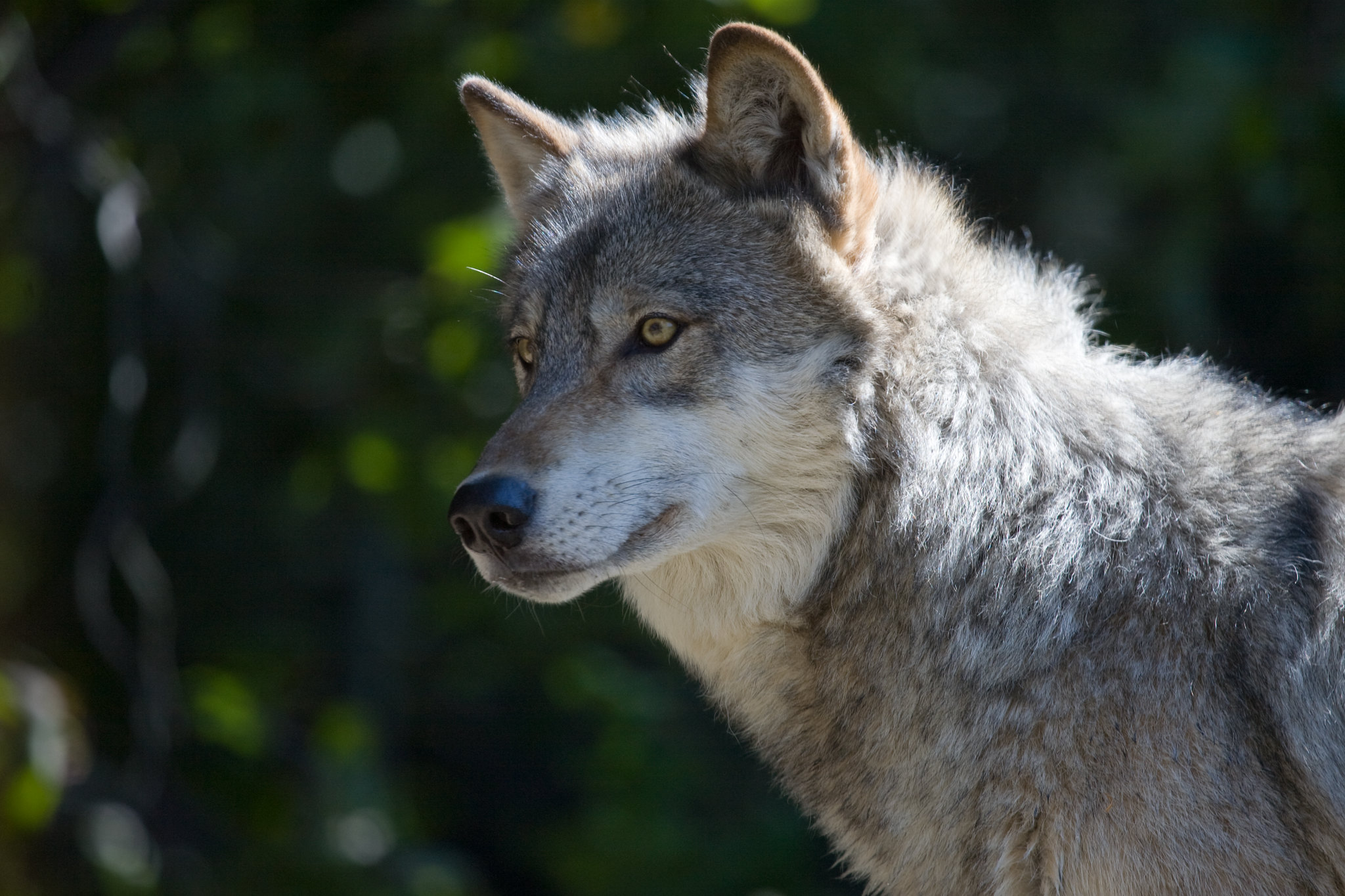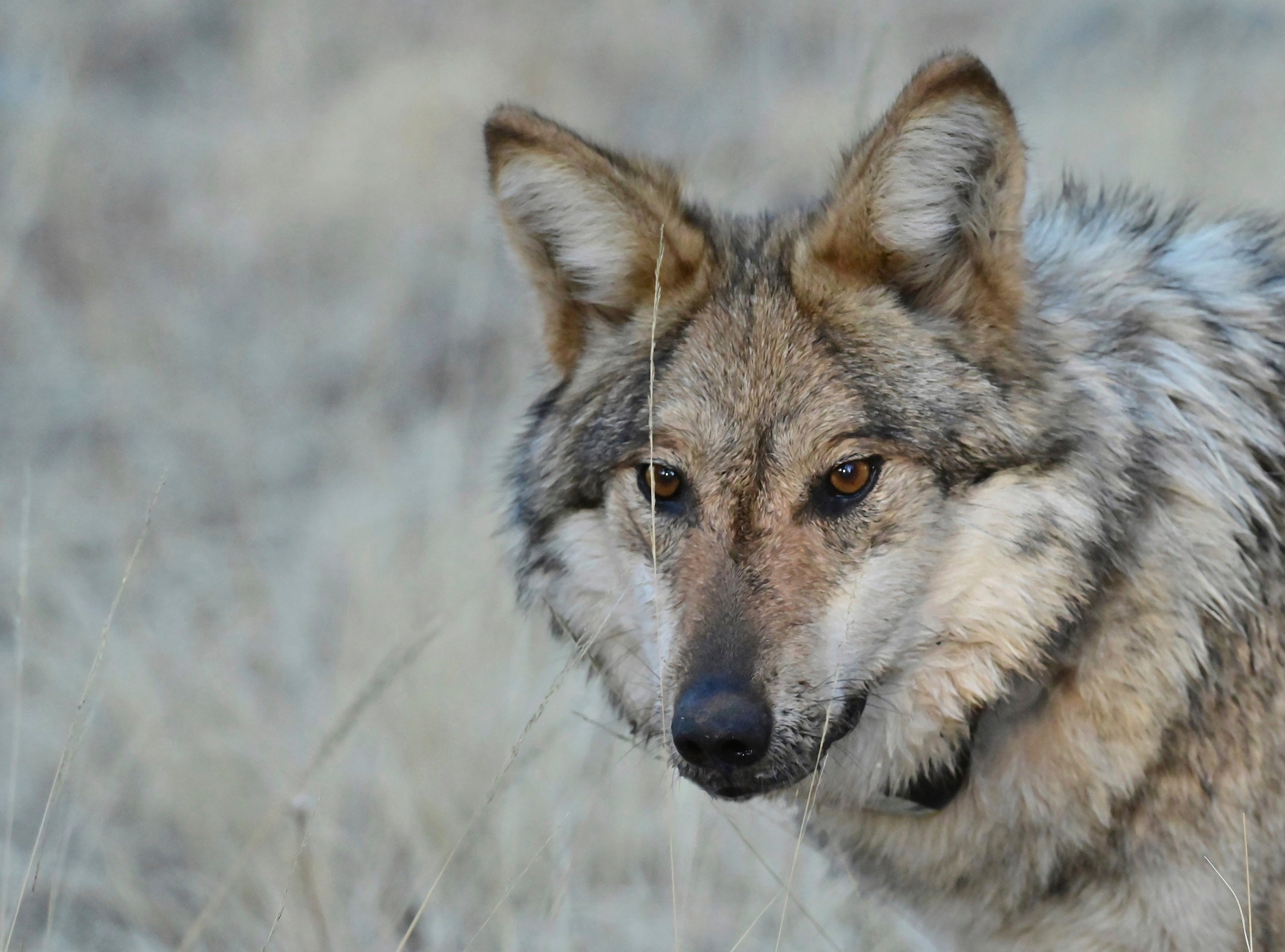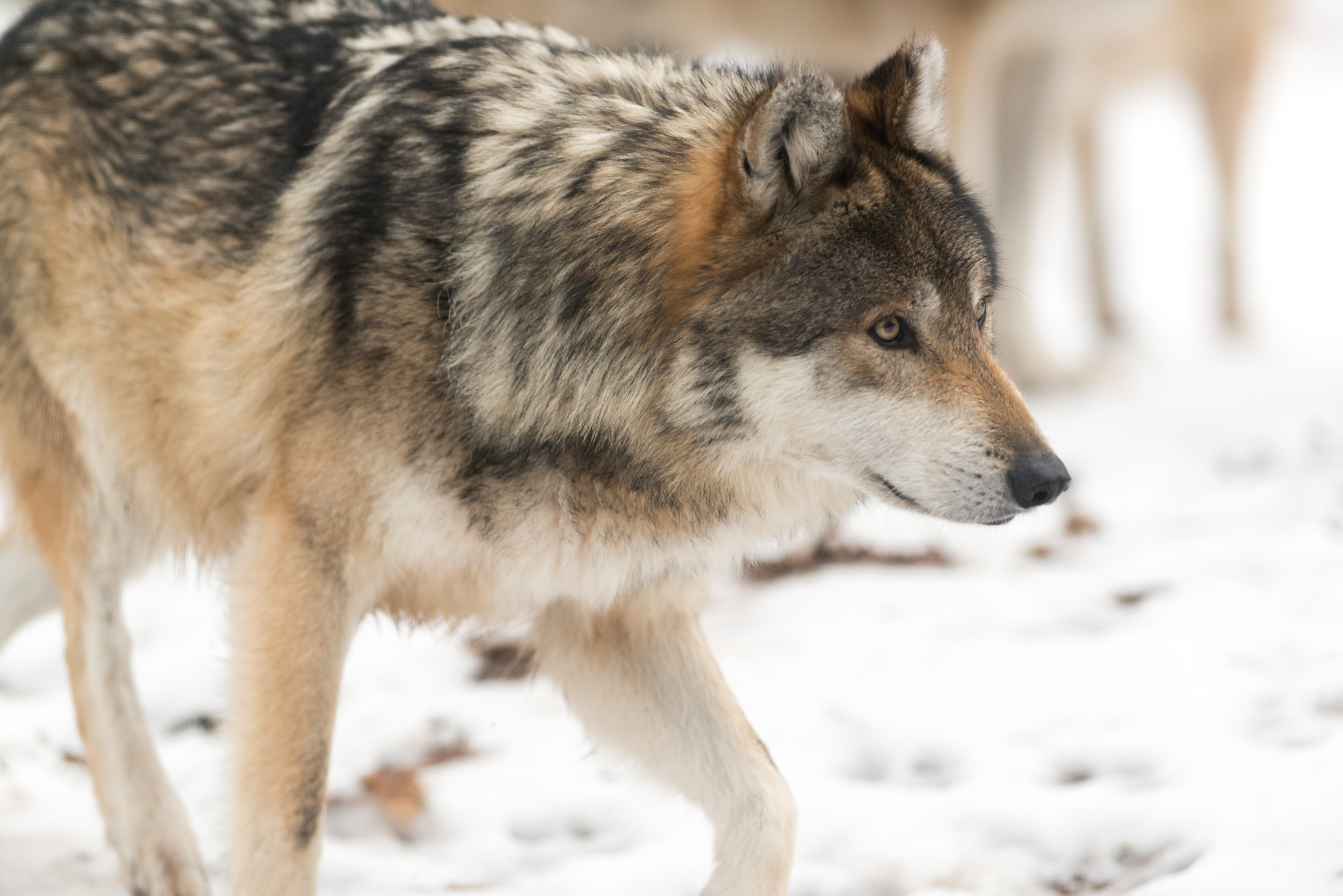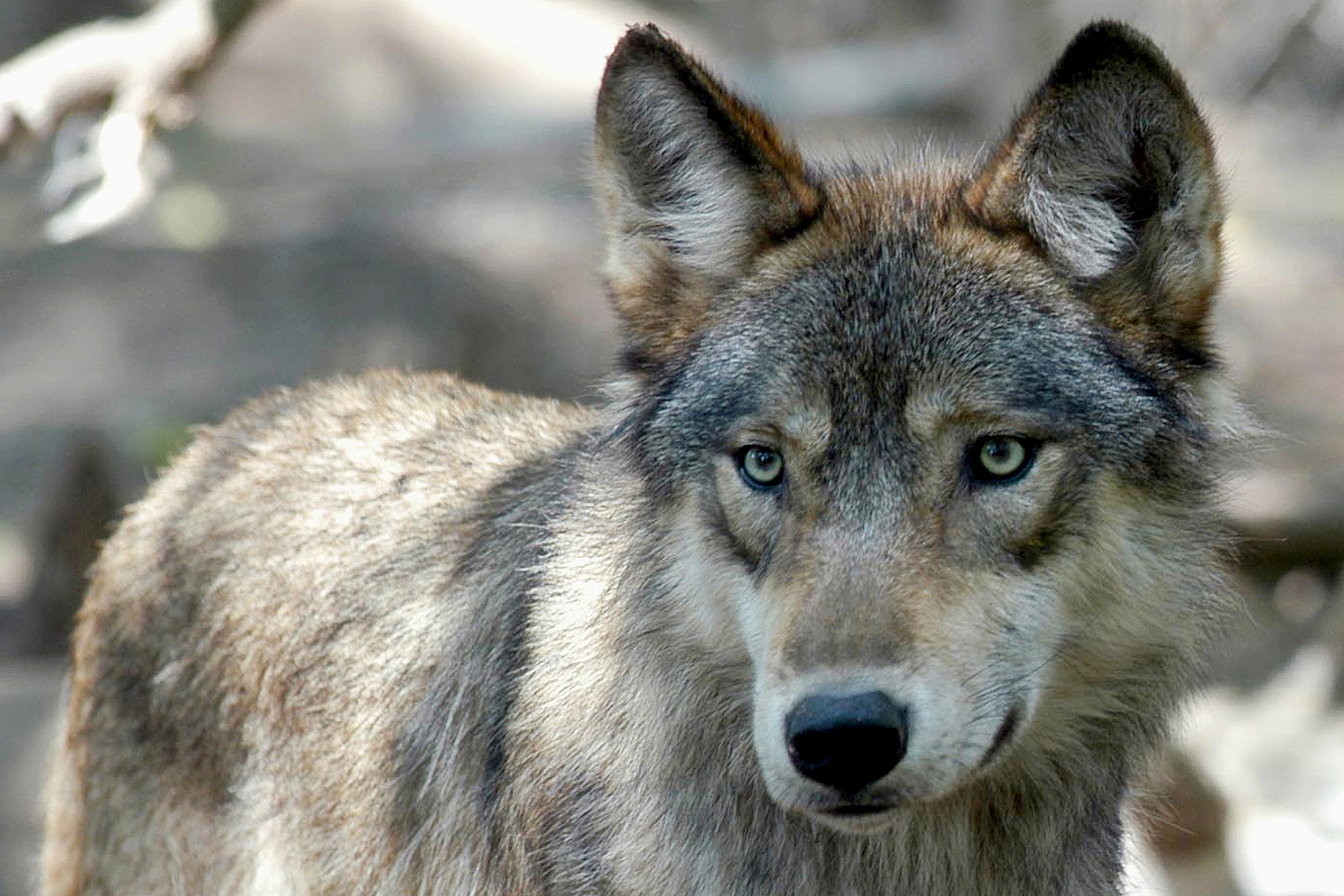A third of Wisconsin’s gray wolf population has been killed by hunters and poachers since the Trump administration moved to end federal protections for most of the species across the country, according to the findings of a new study by University of Wisconsin-Madison researchers.
The research published in the peer-reviewed journal PeerJ found that around 100 wolves were killed in addition to the 218 wolves that were harvested during the February wolf hunt as a result of the wolf’s delisting. The losses combined represent around 313 to 323 wolves or up to 33 percent of the state’s wolf population.
The study estimated the wolf population now comprises around 695 to 751 wolves across the state. That’s down from 1,034 wolves in April 2020, according to Adrian Treves, an environmental studies professor at UW-Madison. He and other researchers say it would be unwise to hold another wolf hunt this fall.
News with a little more humanity
WPR’s “Wisconsin Today” newsletter keeps you connected to the state you love without feeling overwhelmed. No paywall. No agenda. No corporate filter.
“By holding this past hunt in February, that’s during the wolf mating season, there’s a very high probability that a large number of wolf packs will not reproduce successfully this year,” said Treves. “That’s either because the alphas got killed, or the stress of being pursued led to abortion of their litters, or these indirect effects where packs are destabilized by hunting and they split up.”
Treves’ team is urging the Wisconsin Department of Natural Resources to use the best available science, contending regulators are underestimating wolf mortality and overestimating their resilience. Treves fears the state’s upcoming wolf hunt on Nov. 6 will jeopardize the state’s wolf population and put them at risk of being listed as a state endangered or threatened species.
“There’s always this risk that another wolf hunt would overdo it, just like the one in February overshot the quota by 80 percent,” said Treves.
State-licensed hunters blew past their quota of 119 wolves and harvested 218 wolves in less than 72 hours at the end of February. The Natural Resources Board set an overall quota of 200 wolves that was split between state and tribal hunters, although Wisconsin Ojibwe tribes declined to harvest wolves because they view the animal as a relative.
Wisconsin law requires a wolf hunt when the animal isn’t listed as an endangered species. The DNR first proposed holding a wolf hunt this fall to allow more time for tribal consultation, public input and updating its outdated wolf management plan. But Kansas-based group Hunter Nation sued the agency to force a season. A Jefferson County judge ordered a hunt to be held in February. The DNR appealed the ruling, but an appeals panel dismissed the case.
The findings by Treves and his team build on previous research they published in 2020 that found growth in wolf populations decline in Wisconsin and Michigan when the animal is removed from the federal endangered species list. They used modeling based on radio-collared wolves to estimate that people killed 98 to 105 more wolves in Wisconsin from Nov. 3 to mid-April on top of those harvested in the hunt.
Treves contends that cryptic poaching — or illegal killings where poachers hide evidence — rises significantly when federal protections are removed, accounting for two-thirds of collars that have disappeared. He said other possible causes like battery failure or wolves migrating over long distances are unlikely to account for most lost collars.
Some researchers have questioned that assumption, including Adrian Wydeven, a former state wolf biologist who now co-chairs the wildlife working group for conservation organization Wisconsin’s Green Fire. Wydeven noted that the DNR is using more GPS collars than the VHF collars that have been previously used, which he claimed are more reliable.
“With GPS collars, there’s a lot lower level of reliability. Collars that may be on for only a few weeks to a few months — they’re supposed to last for a couple of years, but it’s a lot more variable,” said Wydeven. “So a lot of the reduction in radio telemetry could also be just in the variability of the kind of collars being used.”
Wydeven also doesn’t fully agree with the study’s findings that federal delisting played the largest role in the population decrease, saying state politics and state wolf harvest regulations likely play a larger role in illegal killings. Research by Wydeven and others has shown that illegal kills account for around 9 percent of deaths each year.
Despite that, he said the study’s estimates of the post-harvest wolf population seem reasonable.
“The assertions are pretty logical that there was a very high harvest, and that the number of wolves killed were far beyond just what was registered, which is typical for almost any kind of a wildlife harvest,” said Wydeven. “There’s always some unrecovered mortalities, some animals that perhaps get shot that don’t get turned in, so that part’s very logical.”
Wisconsin’s Green Fire has estimated as many as 100 wolf packs may lose pups as a result of the February harvest.
Dick Thiel, a former wolf and wildlife biologist with the DNR for more than three decades, said the study’s findings around cryptic poaching are interesting. But, he called it an unsettled area of science.
The UW-Madison study predicts the wolf population could rebound within one to two years without a wolf hunt this fall, but Thiel suggested wolves may be able to recover more quickly, calling the animals prolific breeders. But, he agreed that uncertainty remains over the state’s wolf population in light of what he referred to as a “bloody” wolf season this past winter.
“The real big unknown is how many of those packs, in which wolves were harvested, were breeding females taken out at precisely the wrong time, which is just post breeding season,” said Thiel.
The DNR has provided a pre-hunt estimate of 1,136 wolves among the state’s packs prior to the February wolf hunt. The agency has highlighted uncertainty surrounding the wolf population post-harvest because much of state tracking and monitoring data was collected before the wolf season.
On Wednesday, DNR spokesperson Sarah Hoye said the study’s reliance on the agency’s minimum population count in spring 2020 to arrive at a post-hunt population estimate was inappropriate, calling it an “apples to oranges” comparison that failed to use the best available science captured in the agency’s occupancy model.
Hoye said researchers’ assumptions about unknown collar failures were speculative and lacked data to support the study’s illegal killing rate. The agency also disputed Treves’ claims that the DNR is underestimating wolf mortality, saying it uses a conservative rate to estimate human-caused mortality as part of developing harvest quotas.
As the DNR develops a harvest recommendation for this fall, Thiel said there are many unknowns surrounding the politics of wolf management. He added that the state’s population goal remains unsettled as the state’s 1999 wolf management plan is being revised for the first time since 2007.
“In the meantime, going through these harvests is going to be kind of walking on eggshells because we’re not using the sciences that are available because what’s driving it is an outmoded plan. We also have politics that relies on that plan,” said Thiel. “All of that stuff needs to be sorted out and corrected, and we’re not there yet.”
Treves and his team argue that’s why plans for another hunt raise questions about sustainability. In the study, they contend that delisting “opens the door for antagonists to kill large numbers in short periods, legally and illegally.”
As for their findings, he invited others to share evidence to the contrary, saying their estimates are grounded in conservative science. He pushed back against those who have called for more direct evidence.
“Poachers are destroying the evidence, so we need to work with the evidence we have,” said Treves. “And, there’s just no known biological mechanism other than poaching for the increases in the disappearance and death when the federal government relaxes (endangered species) protections.”
Editor’s note: This story was updated with comments from the Wisconsin DNR on Thursday, July 8, 2021, at 8 a.m.
Wisconsin Public Radio, © Copyright 2025, Board of Regents of the University of Wisconsin System and Wisconsin Educational Communications Board.





